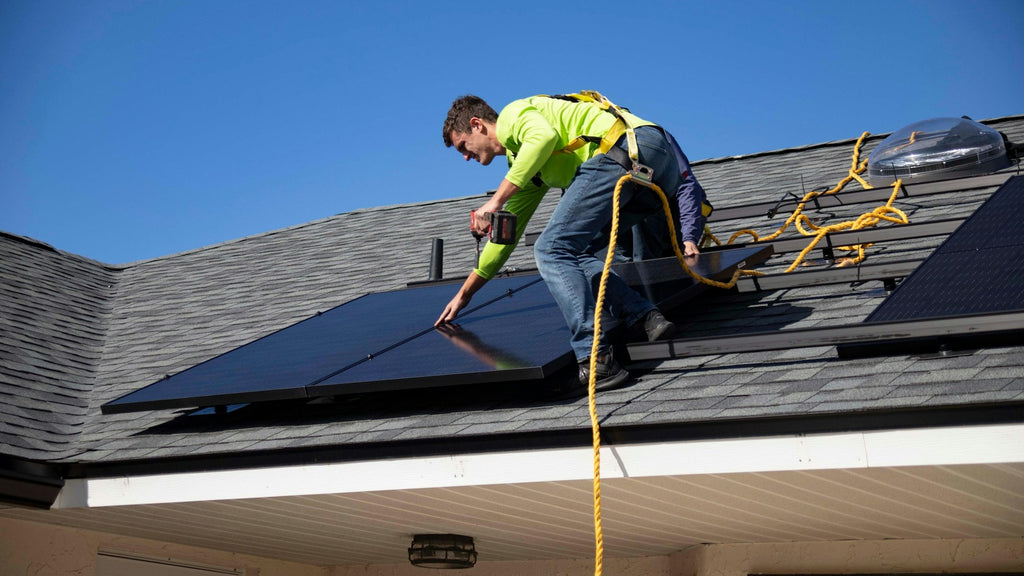
Solar Charge Controller vs. Inverter: A Complete Guide
In solar energy systems, two essential components play crucial roles in ensuring the efficient and safe operation of your setup: solar charge controllers and inverters. The article today explores the functionalities, types, and the relationship between solar charge controllers and inverters in an effort to equip you with a good grasp of two systems.
What Is a Solar Charge Controller?
A solar charge controller is a vital component in any solar energy system that utilizes batteries for energy storage. Its primary function is to regulate the flow of electricity from the solar panels to the batteries, preventing overcharging and ensuring optimal battery performance. When solar panels generate electricity, the voltage and current can fluctuate based on factors such as sunlight intensity and temperature. The solar charge controller acts as a gatekeeper, monitoring the battery's state of charge and adjusting the incoming power accordingly.
In Germany, where the average household consumes around 3,500 kWh of electricity annually, a well-designed solar energy system with a properly sized solar charge controller can significantly reduce reliance on the grid and lower energy costs. By preventing battery overcharging and deep discharge, solar charge controllers extend the lifespan of the batteries, which is crucial considering the significant investment in a solar energy system.

Types of Solar Charge Controllers
There are two main types of solar charge controllers:Pulse Width Modulation (PWM) and Maximum Power Point Tracking (MPPT). PWM charge controllers are the more basic and affordable option, suitable for smaller solar energy systems. They work by gradually reducing the amount of power sent to the batteries as they approach full charge, ensuring a safe and efficient charging process.
On the other hand, MPPT charge controllers are more advanced and efficient, making them ideal for larger solar energy systems. They continuously monitor the voltage and current from the solar panels, adjusting the charging process to maximize power output. MPPT controllers can boost charging efficiency by up to 30% compared to PWM controllers, especially in colder climates like Germany, where solar panel performance can be affected by temperature.
What Is an Inverter?
An inverter is another critical component in a solar energy system, responsible for converting the direct current (DC) electricity generated by the solar panels or stored in the batteries into alternating current (AC) electricity. AC electricity is the standard form of power used by most household appliances and the electrical grid. Inverters come into play in two scenarios: grid-tied systems and off-grid systems with battery backup.
In a grid-tied solar energy system, the inverter takes the DC electricity from the solar panels and converts it into AC electricity, which is then fed into the household's electrical system and the utility grid. When the solar panels generate more electricity than the household consumes, the excess power is sent back to the grid, often resulting in credits on the homeowner's energy bill through net metering policies.
In Germany, the feed-in tariff system has been a major driver of solar energy adoption. As of 2021, homeowners can earn around €0.08 per kWh for the excess electricity they feed into the grid, making inverters a crucial component in maximizing the financial benefits of solar energy.

Types of Inverters
There 3 main types of inverters used in solar energy systems:string inverters, microinverters, and hybrid inverters.String inverters are the most common and cost-effective option, connecting multiple solar panels in a series and converting their combined DC output into AC electricity. They are suitable for solar arrays with consistent sunlight exposure and minimal shading.
Microinverters, on the other hand, are installed on each individual solar panel, converting DC to AC electricity at the panel level. This setup allows for better performance in systems with partial shading or panels facing different directions. Microinverters also enable panel-level monitoring, making it easier to identify and troubleshoot issues.
Hybrid inverters, also known as multi-mode inverters, combine the functions of both string inverters and battery inverters. They can handle both grid-tied and off-grid operations, making them a versatile choice for systems with battery backup or those looking to add energy storage in the future.
How a Solar Charge Controller is Related to an Inverter
While solar charge controllers and inverters serve different purposes, they work together to ensure the smooth operation of a solar energy system.
- In an off-grid setup with battery backup, the solar charge controller regulates the charging of the batteries while the inverter converts the stored DC electricity into AC electricity for household use.
- In a grid-tied system without batteries, the solar charge controller is not necessary, as the inverter directly converts the DC electricity from the solar panels into AC electricity for immediate use or export to the grid.
It's essential to size the solar charge controller and inverter correctly based on the solar array's power output, battery capacity, and household energy consumption. A well-designed system will optimize the performance and longevity of the components, ensuring a reliable and efficient solar energy solution.
Final Words
Understanding the roles and differences between solar charge controllers and inverters is crucial for anyone considering a solar energy system. By selecting the appropriate types of controllers and inverters based on your specific needs and system configuration, you can maximize the performance, efficiency, and financial benefits of your solar investment.

Leave a comment